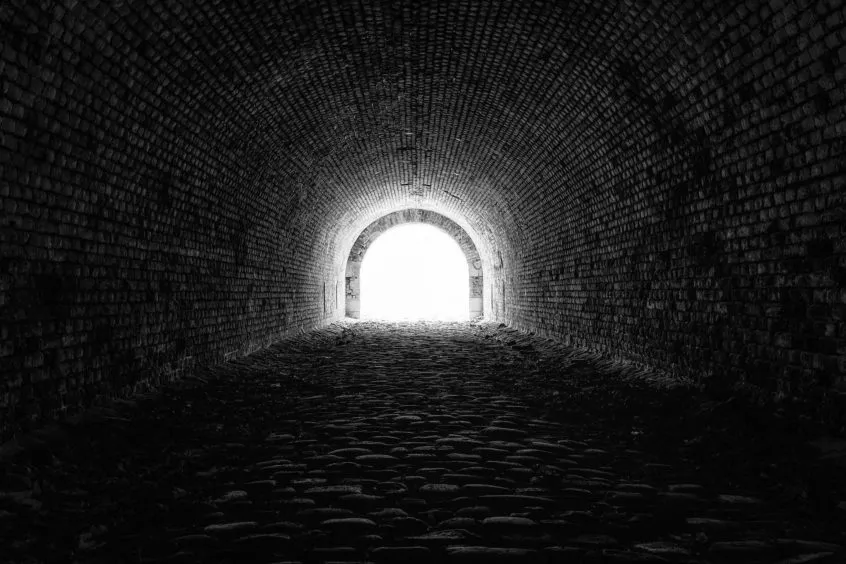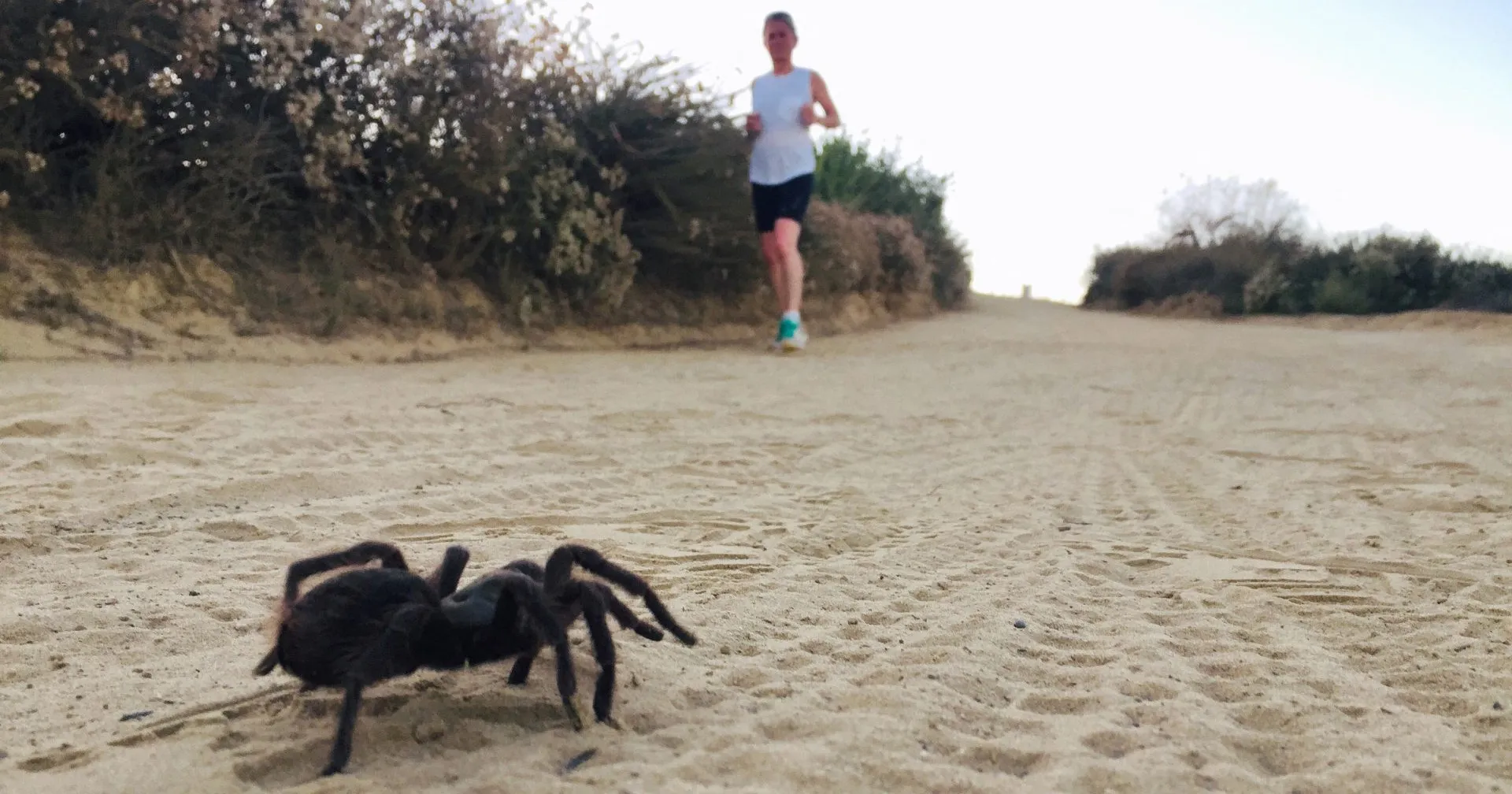What is Tunnel Phobia?
Tunnel phobia, also known as a fear of tunnels, is a specific phobia characterized by an intense and irrational fear of tunnels. This fear can manifest as significant anxiety, panic attacks, and avoidance behaviors when individuals anticipate or encounter tunnels. The anxiety associated with tunnel phobia stems from various factors, including feelings of confinement, lack of control, and potential for unseen dangers. People experiencing tunnel phobia often go to great lengths to avoid driving through tunnels, which can significantly impact their daily lives, limiting travel options and causing considerable stress. Understanding the nature of tunnel phobia is the first step in addressing and managing this condition, allowing for more effective coping strategies and, ultimately, a reduction in fear.
Common Symptoms of Tunnel Phobia
The symptoms of tunnel phobia can vary in intensity from person to person, but generally involve both physical and psychological responses. These symptoms can arise even before entering a tunnel, triggered by the thought or anticipation of the experience. Recognizing these symptoms is vital for understanding the impact of the phobia and implementing appropriate strategies for managing the anxiety. Common signs range from mild discomfort to full-blown panic, potentially affecting one’s ability to function normally. Effectively addressing the fear requires careful observation of the individual’s reactions and a tailored approach to overcome the challenges.
Physical Symptoms

Physical symptoms of tunnel phobia are often the most immediately noticeable signs of anxiety. These physiological responses are triggered by the body’s fight-or-flight response and can manifest in various ways. Common physical symptoms include a rapid heartbeat, shortness of breath, and chest pain, which can be very frightening for the individual experiencing them. Other symptoms may include sweating, trembling, dizziness, and nausea, all contributing to a sense of overwhelming panic. These physical reactions are not dangerous in themselves but can create a cycle of fear, intensifying the anxiety and reinforcing the phobia. Recognizing these symptoms helps in devising appropriate coping strategies to mitigate the physical manifestations of tunnel fear.
Psychological Symptoms
Psychological symptoms of tunnel phobia involve emotional and cognitive responses that accompany the fear. These symptoms can be as debilitating as the physical ones and often contribute to the individual’s overall distress. Common psychological symptoms include intense fear, panic, and a sense of impending doom. People might experience a feeling of losing control, as if they might faint, or that something terrible will happen. Additionally, individuals with tunnel phobia may experience intrusive thoughts, difficulty concentrating, and a strong urge to escape the situation. These psychological reactions can lead to significant avoidance behavior and a decreased quality of life. Addressing these mental aspects is critical for effective phobia management.
Why Are People Afraid of Tunnels?
The fear of tunnels is not a singular phenomenon but rather a complex issue that can stem from a variety of factors. It often involves a combination of psychological and environmental triggers. Understanding the underlying reasons for this phobia can help individuals develop effective coping strategies. Various elements contribute to this specific fear, from innate human responses to learned behaviors. Acknowledging these contributing factors allows for a more nuanced approach to treatment and personal management strategies. Examining each of these contributing elements is vital for helping individuals to understand and work through their fear of driving in tunnels.
Claustrophobia and Its Role

Claustrophobia, the fear of enclosed spaces, is a significant factor in tunnel phobia. Tunnels inherently present a confined environment, triggering the claustrophobic’s anxiety. The feeling of being trapped, the limited space, and the potential for restricted movement can provoke intense feelings of panic. People with claustrophobia may experience heightened anxiety when entering tunnels, where the lack of natural light and ventilation further exacerbate their fears. Understanding the relationship between claustrophobia and tunnel phobia highlights the importance of addressing the underlying fear of confined spaces. Effective strategies often focus on gradual exposure to enclosed environments and techniques to manage the associated anxiety.
Past Traumatic Experiences
Past traumatic experiences, particularly those involving confinement or feeling trapped, can significantly contribute to the development of tunnel phobia. Accidents, getting stuck in enclosed spaces, or even exposure to frightening events in tunnels can create lasting psychological effects. Such experiences can lead to the development of strong associations between tunnels and danger, triggering a fear response. The brain might store these memories, leading to the anticipation of potential threats when confronted with similar situations. Addressing the impact of past trauma often involves professional support to process and reframe these experiences, which can lessen the intensity of the fear response.
Lack of Control
The feeling of a lack of control within a tunnel is another significant factor in tunnel phobia. When driving through a tunnel, individuals often feel a reduced ability to influence their environment. The lack of immediate escape options, combined with the potential for unexpected events (like traffic or accidents), can heighten anxiety. The feeling of being at the mercy of the tunnel’s environment can create a sense of vulnerability and helplessness. For many, the lack of control triggers the fight-or-flight response. Coping strategies often focus on regaining a sense of control, like visualization, or preparation, which can help reduce the overall fear response.
Top 5 Facts About Tunnel Phobia

Understanding the key facts about tunnel phobia can provide valuable insights into its nature and how to manage it. These facts cover various aspects, from the triggers and prevalence to coping mechanisms and treatment options. Knowing these facts helps to demystify the phobia and provide a clearer pathway to recovery. This knowledge base supports individuals in developing effective strategies and seeking appropriate support. It also helps reduce the sense of isolation often associated with phobias.
Fact 1 Anxiety Triggers
Anxiety triggers vary widely among people with tunnel phobia, but some common factors include the length of the tunnel, the lighting conditions, and the presence of other vehicles. Anticipation is often a major trigger, with the anxiety increasing as individuals approach a tunnel. Dark or poorly lit tunnels can heighten feelings of unease, while heavy traffic can create a sense of being trapped. Recognizing personal triggers allows individuals to prepare and implement coping strategies effectively. Anticipating these triggers and developing a plan can significantly reduce the intensity of the fear and allow for more confident navigation of tunnels.
Fact 2 Prevalence Rates
Tunnel phobia affects a significant portion of the population, though exact prevalence rates are difficult to determine, as many individuals do not seek professional help. Studies suggest that a substantial percentage of the population experiences some level of anxiety or fear related to tunnels. The impact of tunnel phobia can range from mild discomfort to severe impairment, depending on the individual and the severity of their symptoms. Awareness of its prevalence helps to normalize the experience and reduce the stigma associated with seeking help. Understanding prevalence supports the allocation of resources for treatment and the promotion of accessible support systems.
Fact 3 The Role of Lighting and Design

The design and lighting within tunnels greatly influence the level of anxiety experienced by individuals with tunnel phobia. Poorly lit tunnels and those with a sense of enclosure often exacerbate feelings of fear and claustrophobia. The use of bright and well-distributed lighting can reduce anxiety by creating a sense of visibility and openness. Modern tunnel designs often incorporate features to alleviate these concerns, such as open-concept designs, emergency exits, and effective ventilation systems. Understanding the impact of tunnel design highlights the importance of infrastructure in managing anxiety and contributing to a safer experience for all drivers.
Fact 4 Coping Mechanisms
Various coping mechanisms can help individuals manage tunnel phobia and reduce their anxiety. These strategies range from cognitive techniques, such as positive self-talk and challenging negative thoughts, to behavioral techniques, such as deep breathing exercises and progressive muscle relaxation. Preparation is also crucial; planning the route in advance, knowing the tunnel’s length, and having an exit strategy can significantly reduce anxiety. Additionally, using distractions like listening to music or audiobooks can help to shift focus and minimize fear. Finding the right combination of these coping mechanisms is vital for individual effectiveness.
Fact 5 Professional Treatment Options
Professional treatment options, such as therapy and medication, are available for individuals with tunnel phobia. Cognitive Behavioral Therapy (CBT) is a widely used approach that helps people to identify and change negative thought patterns and behaviors. Exposure therapy, another common method, gradually exposes individuals to tunnels under controlled conditions to help them overcome their fear. In some cases, medication, such as anti-anxiety medications, may be prescribed to manage symptoms. Seeking professional help from a qualified mental health professional is an important step in effectively managing and overcoming tunnel phobia.
How to Overcome Tunnel Phobia

Overcoming tunnel phobia is achievable through a combination of self-help strategies and professional interventions. Effective management involves addressing the psychological and behavioral aspects of the phobia. With commitment and the right approach, individuals can significantly reduce their anxiety and regain control over their travel experiences. Combining different approaches increases the chances of a successful outcome and allows for better long-term management of the fear.
Exposure Therapy
Exposure therapy is a cornerstone of phobia treatment and can be highly effective in addressing tunnel phobia. This approach involves gradually exposing individuals to tunnels under controlled and safe conditions. Exposure can begin with visualizing tunnels, then moving to photos or videos, and eventually, to driving through tunnels with a therapist or trusted companion. The goal is to allow the individual to become desensitized to the feared situation. By repeatedly facing the fear in a safe environment, the anxiety response diminishes, and the individual gains confidence. Consistent exposure and guidance from a therapist are essential for successful outcomes.
Cognitive Behavioral Therapy (CBT)
Cognitive Behavioral Therapy (CBT) is another highly effective treatment for tunnel phobia. CBT focuses on helping individuals identify and challenge negative thoughts and behaviors associated with their fear. Through CBT, individuals learn to recognize the triggers of their anxiety and develop healthier coping mechanisms. Techniques such as cognitive restructuring help individuals to reframe their negative thought patterns, while behavioral techniques like relaxation exercises help to manage the physical symptoms of anxiety. CBT provides individuals with the tools they need to manage their phobia and develop resilience in the face of challenging situations. Working with a qualified therapist ensures the best possible outcomes.
Relaxation Techniques

Implementing relaxation techniques is another key component in managing tunnel phobia. These techniques are designed to calm the body and mind during moments of anxiety. Deep breathing exercises, such as diaphragmatic breathing, can slow the heart rate and reduce feelings of panic. Progressive muscle relaxation, which involves tensing and releasing different muscle groups, can also help to reduce physical tension. Meditation and mindfulness practices can also help in bringing awareness and controlling thoughts and emotions. Regular practice of relaxation techniques can help individuals create a toolkit for dealing with anxiety, making the process of driving through tunnels easier.
When to Seek Professional Help
Recognizing the need for professional help is an important step in managing tunnel phobia effectively. Individuals should seek professional assistance if their fear of tunnels significantly impacts their daily lives, causing avoidance of essential activities. Other signs to watch out for are frequent panic attacks, persistent and overwhelming anxiety, and a feeling of being unable to cope with the phobia on their own. A mental health professional can provide accurate diagnoses, develop personalized treatment plans, and offer support. Seeking help is a sign of strength and can significantly improve the quality of life for individuals struggling with tunnel phobia. Don’t hesitate to reach out to a professional; it is an investment in your well-being.
